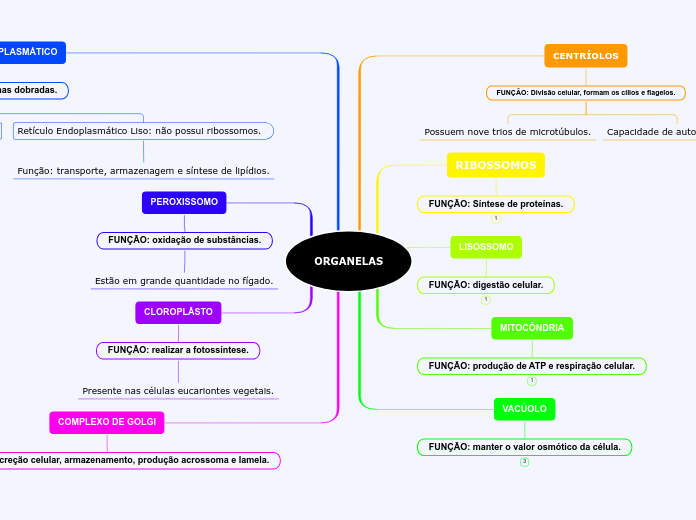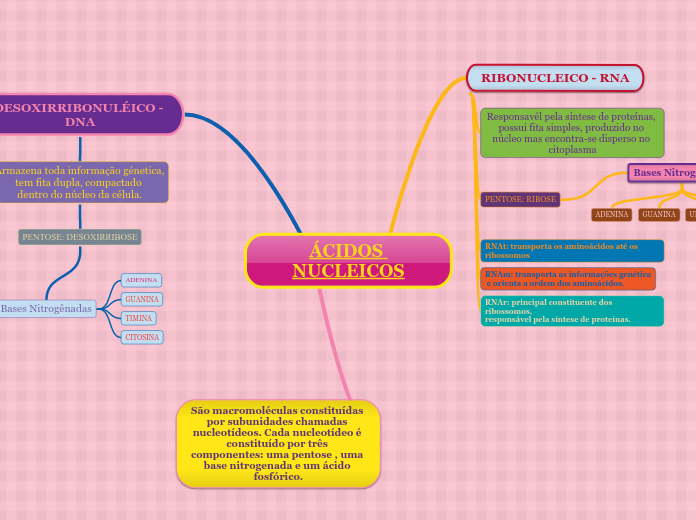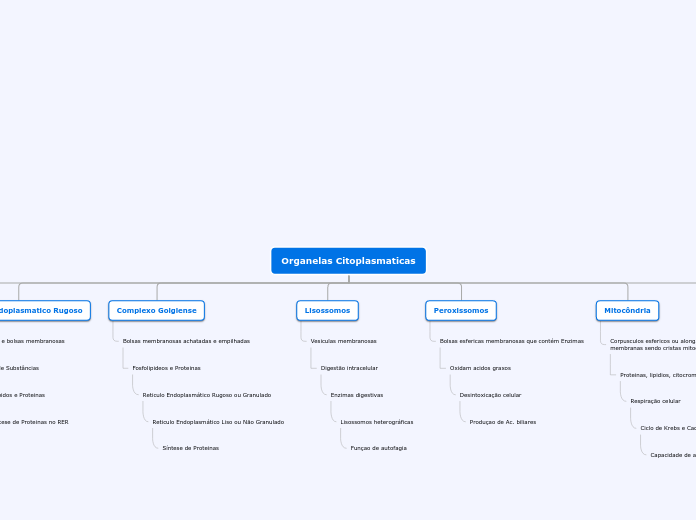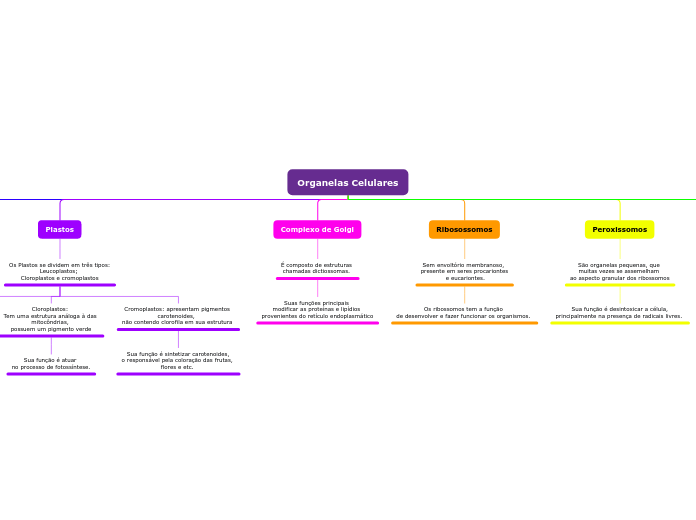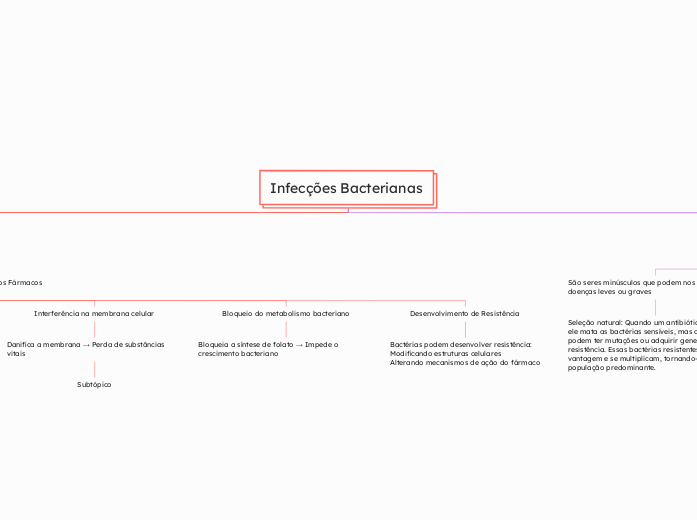ORGANELAS
The part of speech is a category to which a word is assigned according to its syntactic functions. In English the main parts of speech are noun, pronoun, adjective, determiner, verb, adverb, preposition, conjunction, and interjection.
COMPLEXO DE GOLGI
A conjunction is a word like 'if' 'but' or 'and' which is used to connect sentences or clauses together.
FUNÇÃO: secreção celular, armazenamento, produção acrossoma e lamela.
Coordinating conjunctions always connect phrases, words, and clauses. They are: for, and, nor, but, or, yet, so.
CLOROPLÂSTO
An interjection is used to express emotion in a sentence.
Think of other interjections!
FUNÇÃO: realizar a fotossíntese.
Presente nas células eucariontes vegetais.
PEROXISSOMO
An adverb is used to describe a verb, but it can also describe an adjective or another adverb.
Adverbs normally help paint a fuller picture by describing how something happens.
FUNÇÃO: oxidação de substâncias.
Estão em grande quantidade no fígado.
RETÍCULO ENDOPLASMÁTICO
A numeral is a word or phrase that describes a numerical quantity.
Some theories of grammar use the word 'numeral' to refer to cardinal numbers that act as a determiner to specify the quantity of a noun, for example the 'two' in 'two hats'.
Rede de membranas dobradas.
Retículo Endoplasmático Liso: não possui ribossomos.
Função: transporte, armazenagem e síntese de lipídios.
Reticulo Endoplasmático Rugoso: possui ribossomos aderidos.
Função: transporte, armazenagem e síntese proteica.
VACÚOLO
An article is a word used to modify a noun, which is a person, place, object, or idea. Technically, an article is an adjective, which is any word that modifies a noun.
FUNÇÃO: manter o valor osmótico da célula.
It refers directly to a specific noun or groups of nouns.
Vegetais.
Pulsáteis ou contráteis.
De Digestão.
MITOCÔNDRIA
A pronoun is a word that can be used in place of a noun, typically after the noun itself has already been stated.
FUNÇÃO: produção de ATP e respiração celular.
Unlike demonstrative pronouns, which point out specific items, indefinite pronouns are used for non-specific things. This is the largest group of pronouns. All, some, any, several, anyone, nobody, each, both, few, either, none, one, and no one are the most common.
Possui capacidade de autoduplicação.
LISOSSOMO
An adjective is a word that's used to describe a specific noun and to provide more detail to the listener.
FUNÇÃO: digestão celular.
Expresses a comparison between two entities or groups of entities in quality or degree.
Estão ligados às funções heterofágica e autofágica.
RIBOSSOMOS
A noun is defined as a person, place, thing or idea. Proper nouns always begin with a capital letter. Common nouns, which are general words, such as 'cars,' are not capitalized.
FUNÇÃO: Síntese de proteínas.
Countable nouns are nouns that can be counted, even if the number might be extraordinarily high.
Uncountable nouns are nouns that come in a state or quantity which is impossible to count; liquids are uncountable, as are things which act
like liquids.
Subunidade maior e subunidade menor.
CENTRÍOLOS
A verb is an action word or 'doing' word that signifies movement in some way.
FUNÇÃO: Divisão celular, formam os cílios e flagelos.
A participle is a verb form that can be used as an adjective or to create a verb tense. There are two types of participles: Present participle (ending -ing) and Past participle (usually ending -ed, -d, -t, -en, or -n).
Capacidade de autoduplicação.
Possuem nove trios de microtúbulos.
